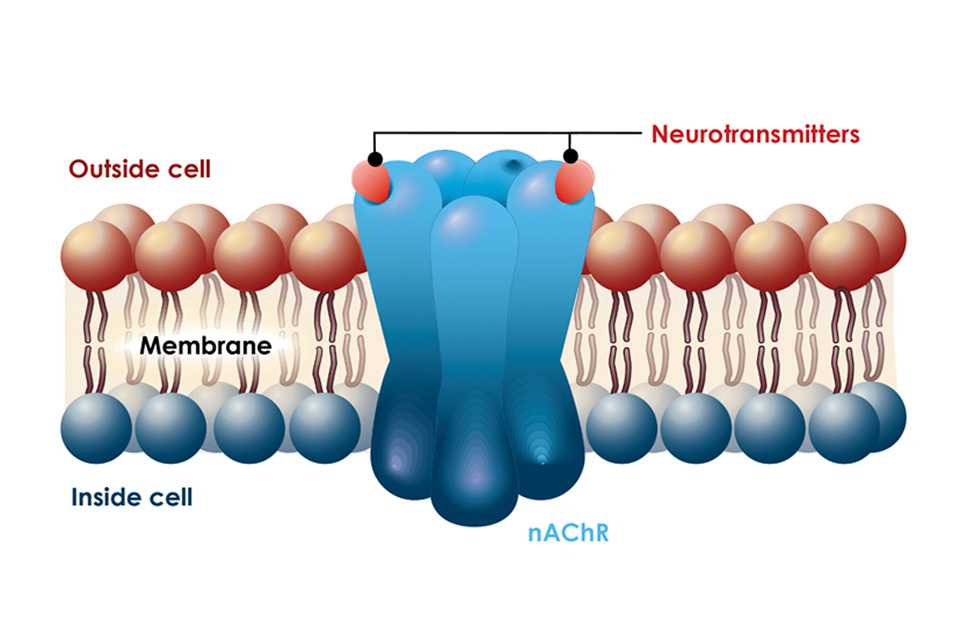How Peptides Provide a Punch in Crop Protection
The word “unique” is often overused because there’s no such thing as “very unique.” The word means one of a kind. Either something is unique or it isn’t. Vestaron Corporation’s Spear bioinsecticide is unique.
Consider that it’s in its own IRAC class, Group 32, the last major new mode of action since the diamides in the mid-2000s, Dan Peck, Vestaron’s Eastern Field Development Biologist, says. Or that it’s made from peptides, which have never been used before in an insecticide product.
Peptides are short chains of between two and 50 amino acids, or “wannabe proteins,” Peck says. There have been previous efforts at using them to formulate insecticides, but developers ran into roadblocks. He says what Vestaron’s Research and Development team has been able to overcome the main hurdles that have stymied others: 1) development of cost-efficient manufacturing; 2) formulation for oral availability in pests; and 3) an EPA regulatory pathway.
Spear bioinsecticide, which addresses insecticide resistance to current synthetic insecticides, is currently available in two products. Spear alone (SPEAR-T) is used primarily in greenhouses for contact control of smaller, soft-bodied insects such as mites, thrips, and whiteflies. Spear, in combination with the appropriate Bt (SPEAR-LEP), is used for control of lepidopteran larvae in high-value field crops. When ingested along with Spear, Bt disrupts the midgut and allows the peptide to pass over and reach target sites in the insect nervous system.
The key pests that can be controlled in those high-dollar crops, Peck says, include navel orangeworm in almond, codling moth in apples, and diamondback moth in crucifers and cabbages. “And based on our experience, likely any and all leps,” he adds.
Native peptides themselves can’t be formulated, Peck says; they need painstaking engineering to be expressed in production yeast, for instance, or to hold their shape in the challenging environment of the insect gut. That optimization process can also eliminate issues such as mammalian toxicity or pollinator impacts. Spear is also exempt from Maximum Residue Limits (MRLs) for pesticides, has a 0-day pre-harvest interval, and a four-hour restricted-entry interval.

Nicotinic acetylcholine receptors (nAChR) are channels found in the nerves of insects that respond to neurotransmitters. These receptors are essential for transducing certain electrical signals, such as the muscle contraction.
Award Winning
In fact, the bioinsecticide most recently earned recognition from the Environmental Protection Agency (EPA) via its Green Chemistry Challenge Awards Program. Since 1996, the EPA, in partnership with the American Chemical Society Green Chemistry Institute, has awarded more than 100 winners for technologies that incorporate the principles of green chemistry design into chemical design, manufacture, and use.
Spear was recognized in the Focus Area of “The Design of Greener Chemicals” within the extremely competitive Small Business Division. Submitting the application was Dr. Robert M. Kennedy, Chief Scientific Officer for Vestaron.
“We are pleased and honored to be recognized for Vestaron’s accomplishments in developing and commercializing the active ingredient in Spear bioinsecticide. For years, the use of peptide technology for pest control has been a desired but elusive goal of the crop protection industry,” Kennedy says. There have been 13 Green Chemistry Award winners in the Agriculture and Agrochemicals/Pesticides industry space since 1996. Of these winners, just five were new active ingredients for insect pest management: Diacylhydrazines (1998); Spinosad (1999); Sentricon (2000); Messenger (2001); and Spinetoram (2008). Spear is the first insecticide using a novel active ingredient to be honored in 12 years.
Peptides’ Future
As Peck mentions above, Vestaron has a number of other peptide products that will be coming out in the future. Because the lepidopteran pests controlled by Spear are so critical, the next peptide will also target those pests, though it will be a distinct mode of action.
“It will be targeting the same suite of pests, but with a novel mode of action, so it can be rotated with Spear and other synthetic insecticides,” he says. “But based on our experience in the development of Spear, we hope it will launch with other improvements, like reduced cost-in-use and greater efficacy.”
That is a key part of the company’s strategy, Peck says, to make peptide bioinsecticides that not only work as quickly as chemical insecticides to which growers have become accustomed but are also cost competitive and as efficacious. While not as inexpensive as older chemistries such as pyrethroids, he says they will be cost competitive with many of the newer insecticides.
In addition, peptides have the advantage of being softer on the environment, with no impact to pollinators, for instance. This validates Spear’s role as an alternative to insecticides like the neonicotinoids that are increasingly subject to restrictions on treating flowering plants, he says.
Each of the new peptide products will not only have a new mode of action, Peck says they anticipate that, like Spear, each will have its own new IRAC group. They would be rotated, much like growers rotate chemical pesticides.
For example, diamondback moth is a critical problem on cruciferous crops, so tough that growers rotate among three to four chemistries because the pest is so capable of developing resistance. “But now we’re adding Spear to the mix. One advantage is that a new mode of action will extend the lifetime of other active ingredients. A second is reducing reliance on chemicals that are less desirable because of their safety profile, impact on non-targets, or other aspects. We feel growers should not have to sacrifice performance in their move toward more sustainable crop protection solutions.”
At Vestaron, they are clearly dreaming big.
“The revolution that drives the company and its investors, is to see biologically based peptides emerge as the next generation of insecticides, and in doing so,” he says, “contribute to more sustainable agricultural production systems.”









